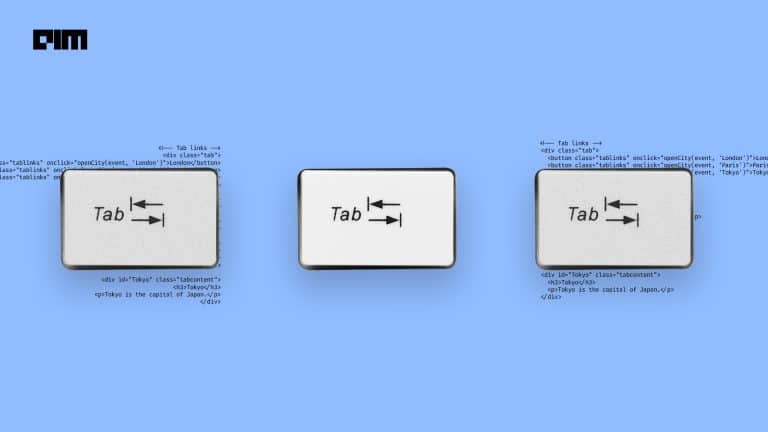|
Listen to this story
|
What does it take to qualify as an AI startup? At what stage do they need financial support? And lastly, what should the ideal mode of financing be? These critical topics came up for discussion when government officials recently met with key industry figures.
The focus of the meeting was AI startups in the context of the IndiaAI Mission.
Notable attendees of the meeting included Google, NVIDIA, and Microsoft, and representatives from AI startups such as Jivi and DronaMaps were also present, the Hindustan Times said.
It’s encouraging to see the government recognise the rapid growth of AI startups across India and acknowledge the significant role they could play in driving the country’s economy in the coming years.
On a recent podcast, Rahul Agarwalla, managing partner at SenseAI Ventures, said he witnessed about 500 new AI startups emerge in the past six months, which is a massive number.
Based on the rate at which AI startups are popping up in the country, Agarwalla believes India could soon have 100 AI unicorns. While it remains to be seen when that happens, the budding AI ecosystem in India will indeed need support from the government beyond regulatory favours.
What Qualifies as an AI Startup?
A key topic discussed at the meeting was the criteria to define an AI startup.
Attendees highlighted to the government that simply having ‘AI’ in their name does not automatically make a startup an AI-focused company.
In response, stakeholders proposed a rating system, which builds credibility among startups and would in turn make them eligible for government funding. Not everyone will make the cut though.
Unfortunately, in the startup world, a majority of them do not live long enough to see the light at the end of the tunnel.
Stakeholders recommend that rather than spreading a small amount of funding thin across many startups, the government should focus on identifying those with significant potential and provide them with targeted financial support.
Earlier, the government had allocated INR 10,372 crore as part of the India AI Mission – a part of which will be used to fund startups.
Should the Government Play the VC?
According to a Tracxn report, Indian AI startups raised $8.2 million in the April-June quarter, while their US counterparts raised $27 billion during the same period.
While not many Indian startups are building LLMs, which cost billions of dollars, the funding for AI startups in India still remains relatively low.
The government, under the IndiaAI Mission, is weighing options to fund AI startups and deciding how best to do so. One bold proposal on the table was taking equity stakes in these emerging companies.
The government had previously suggested taking the equity route as part of the second phase of the designed-linked incentive (DLI) scheme for semiconductor companies. However, the thought was not well received by many in the industry.
“[I] don’t understand the logic of the government trying to become a venture capital firm for chip design companies. This move is likely to be ineffective and inefficient,” Pranay Kotasthane, a public policy researcher, said back then.
They fear government taking equity could lead to government influence over company operations, and historically, public sector companies in India have often underperformed. Moreover, it could push other venture capitalists away.
Access to Datasets and Compute
Stakeholders were also quick to point out that more than financing, what the startups need is help in terms of compute.
According to Abhishek Singh, additional secretary, ministry of electronics and information technology (MeitY), the government plans to disburse INR 5,000 crore of the allocated INR 10,372 crore to procure GPUs.
The government was quick to identify the need for compute, especially for Indian startups, researchers, and other institutions. In fact, last year, the government revealed its intention to build a 25,000 GPU cluster for Indian startups.
Interestingly, PM Narendra Modi also met Jensen Huang, the CEO of NVIDIA, the company producing the most sought-after GPUs in the market, during his visit to India in 2023.
(Source: NVIDIA)
The Indian Express reported earlier this month that the government had finalised a tender to acquire 1,000 GPUs as part of the IndiaAI Mission. These GPUs will provide computing capacity to Indian startups, researchers, public sector agencies, and other government-approved entities.
Besides access to compute, the stakeholders also urged the government to make the datasets under the IndiaAI Mission available as soon as possible. The datasets will grant startups access to non-personal domain-specific data from government ministries to train models.
Notably, the Bhashini initiative is playing a crucial role in democratising access to Indic language datasets and tools for the Indian ecosystem.
India Startup 2.0
While the government’s recognition of the funding gap in AI startups and its willingness to provide financial support is encouraging, it is equally important that the government creates a favourable environment for these businesses to thrive.
In line with this, the government launched the Startup India programme in 2016 to foster a robust ecosystem for innovation and entrepreneurship in the country.
This initiative was designed to drive economic growth and create large-scale employment opportunities by supporting startups through various means. Perhaps, the need of the hour is a similar programme designed specifically for AI startups.
As part of the startup programme, the government identified 92,000 startups and, in addition to funding, provided support such as income tax exemption for three years, credit guarantee schemes, ease of procurement, support for intellectual property protection, and international market access.
Moreover, over 50 regulatory reforms were undertaken by the government since 2016 to enhance the ease of doing business, ease of raising capital, and reduce the compliance burden for the startup ecosystem.
Now, a similar ecosystem needs to emerge for AI startups as well, which fosters innovation, provides essential resources, and facilitates collaboration among researchers, developers, and investors to drive growth and success in the field.
































